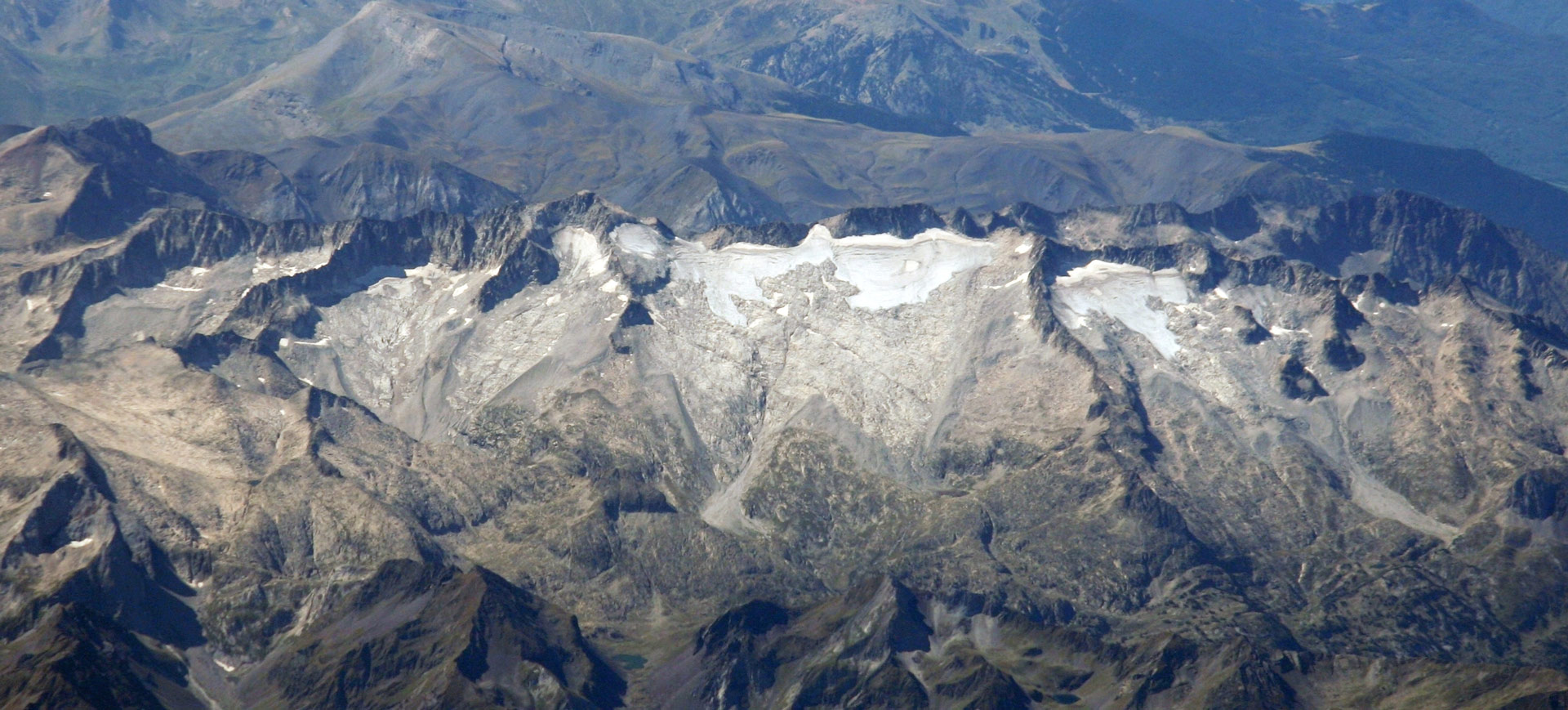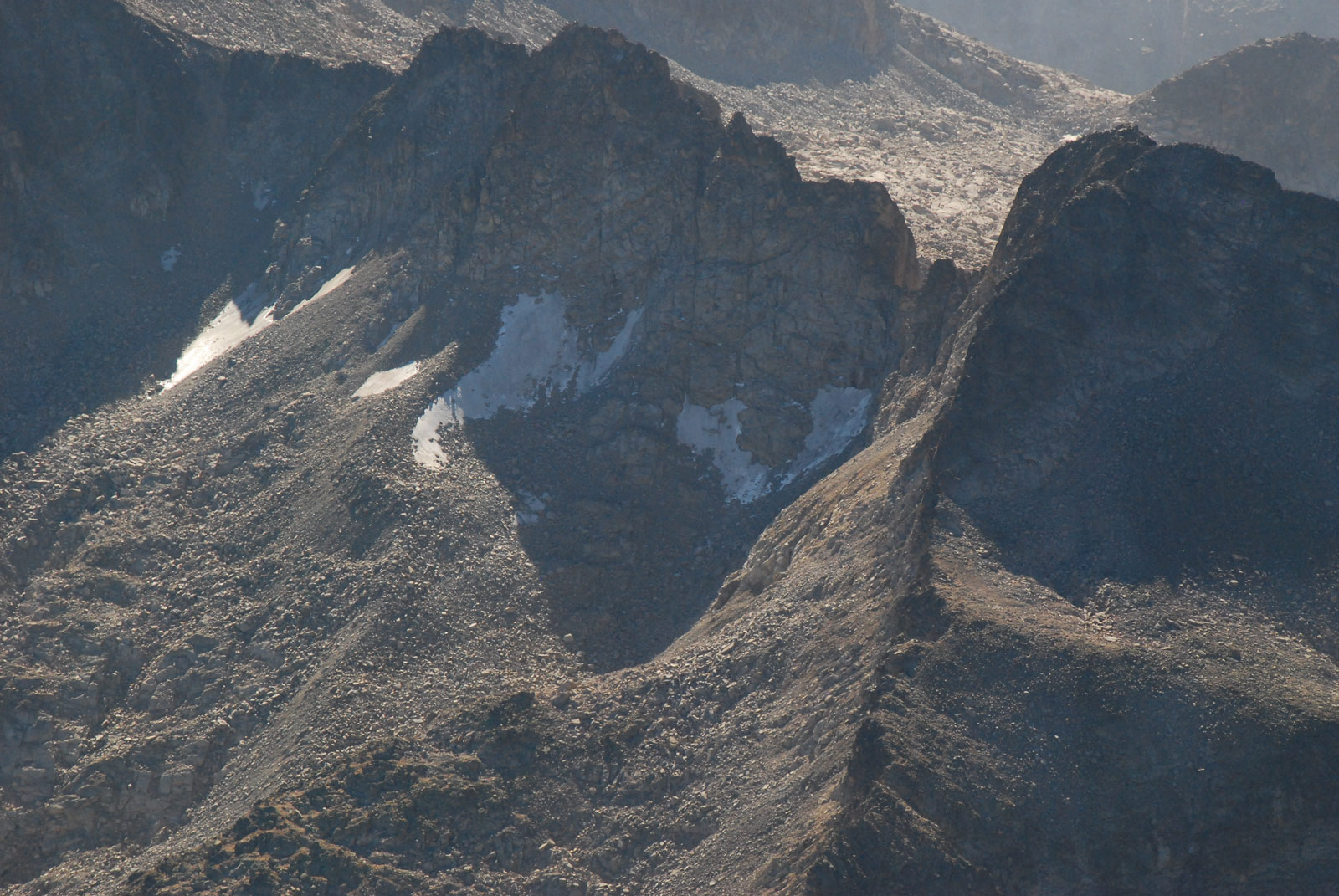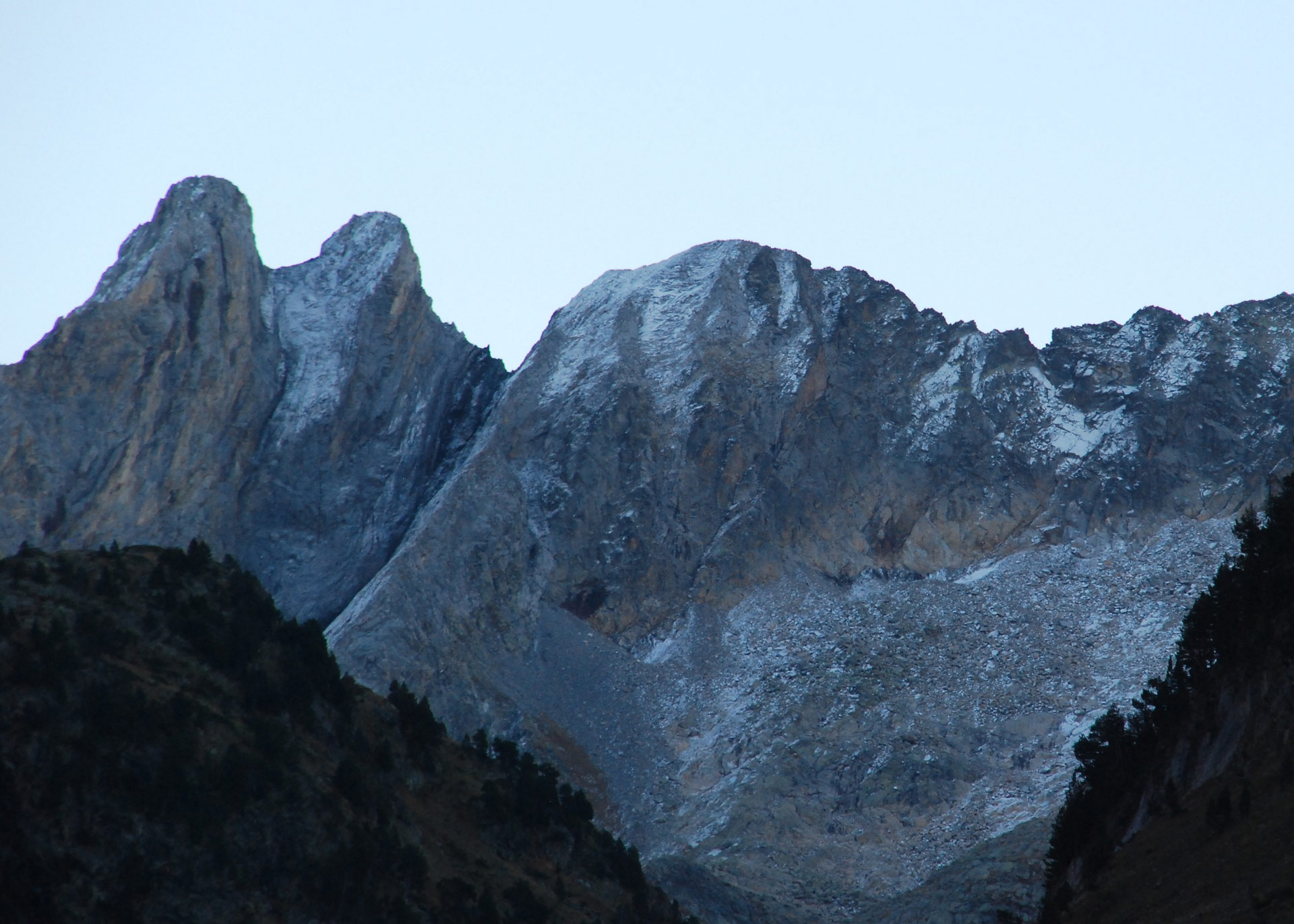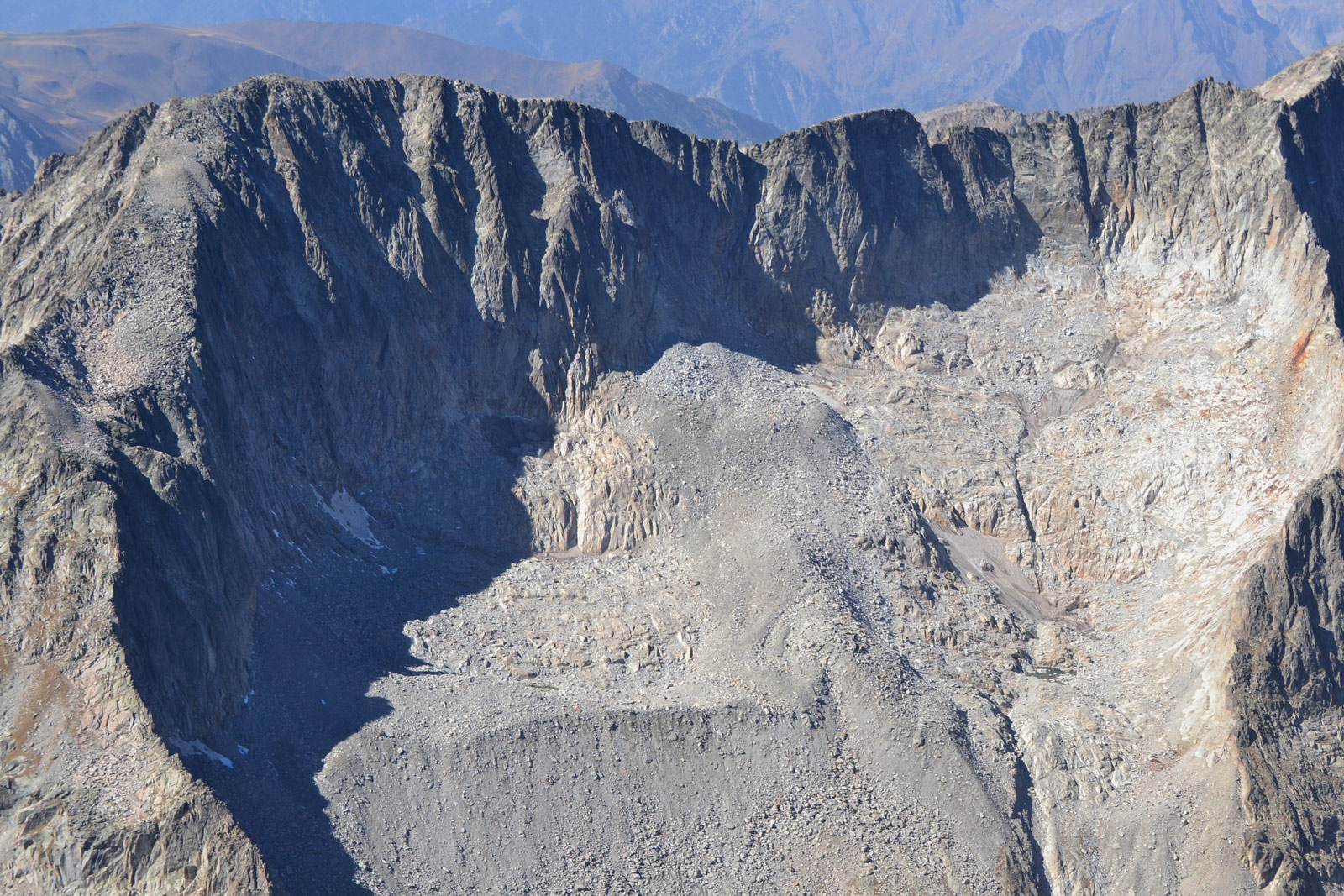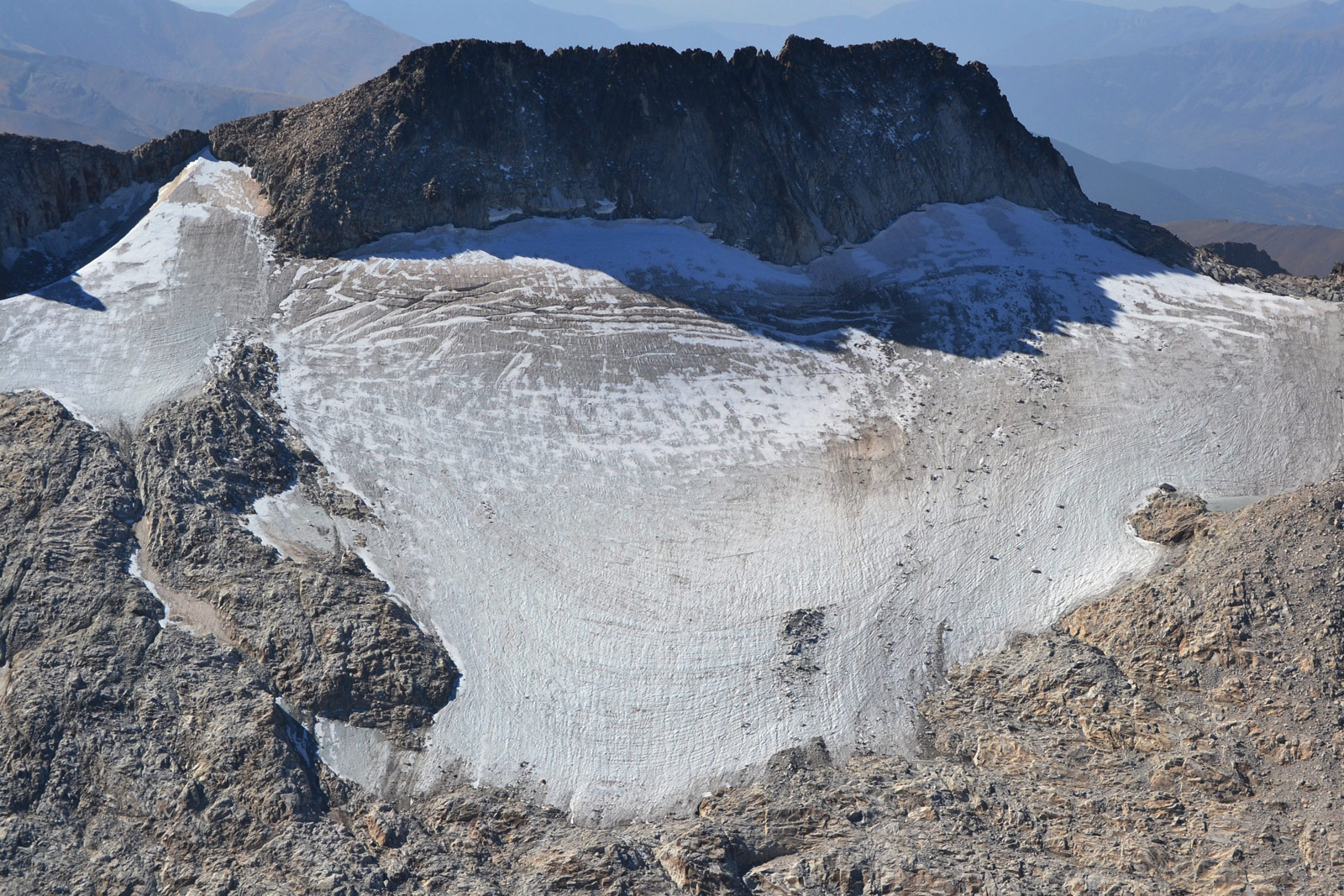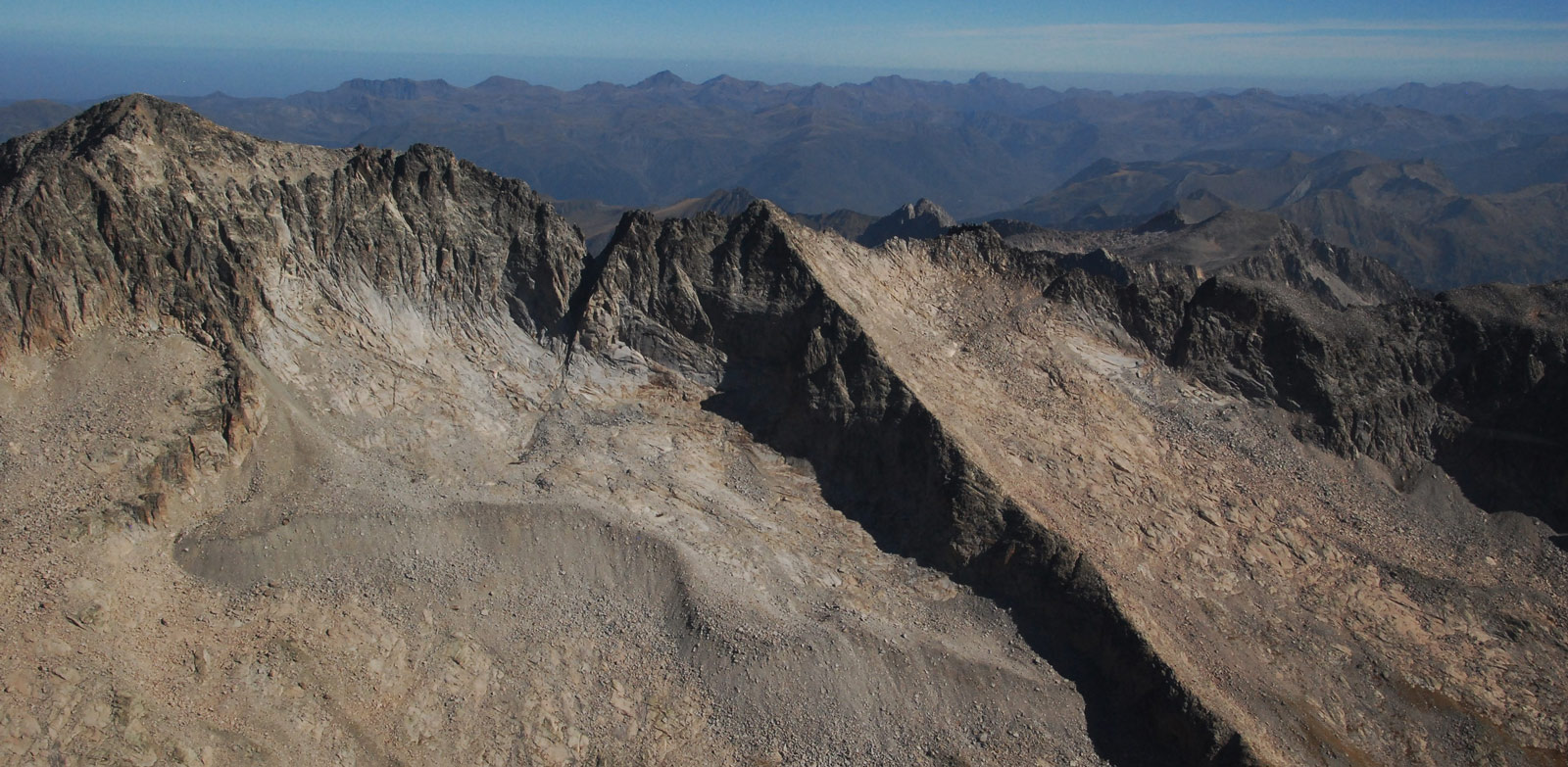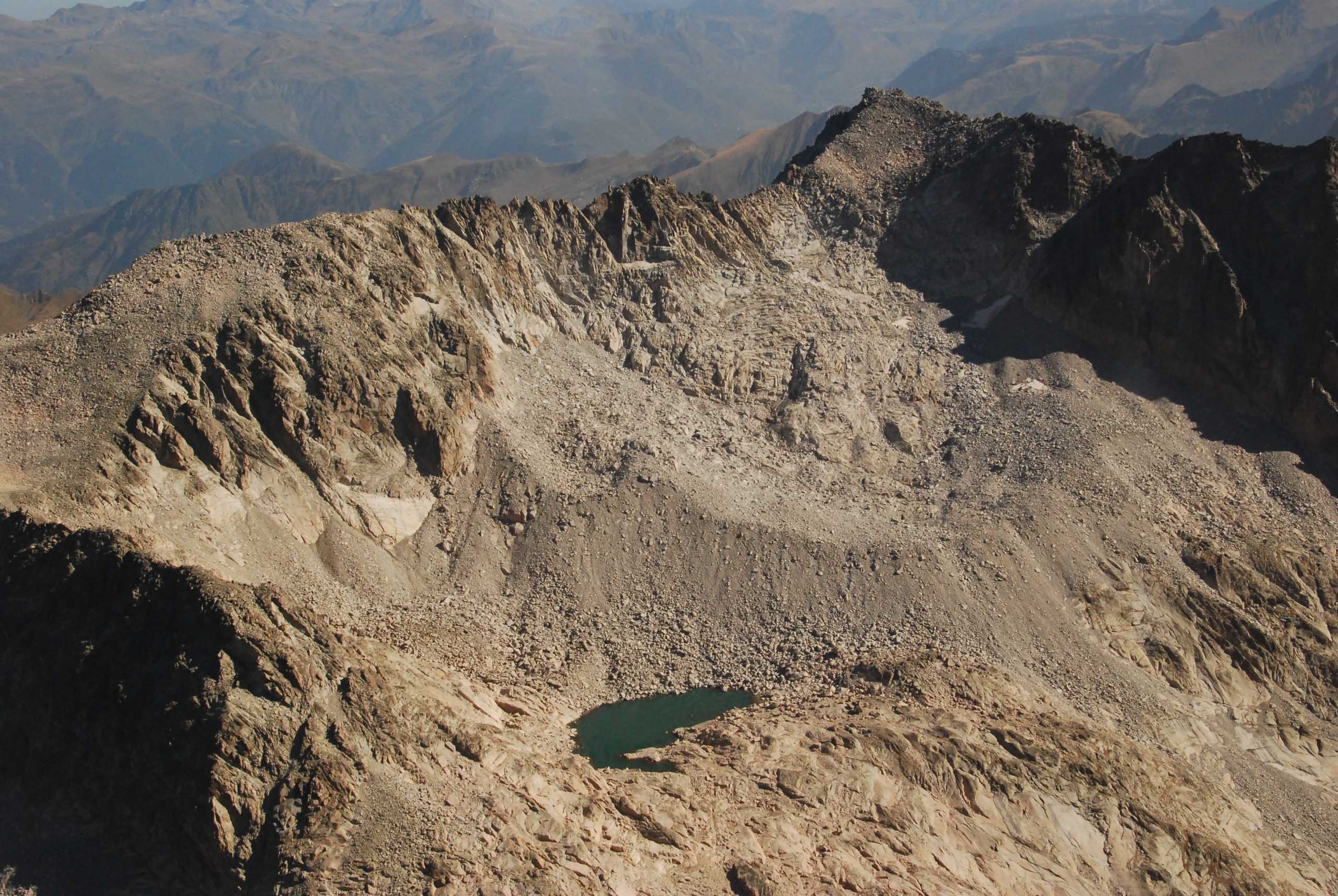The Alba Glacier extended during the Little Ice Age over an area of 10.5 ha, and a maximum length of 350 m, splitting at the beginning of the 20th century into two devices called 17) Muela de Alba and 18) Alba, located between Punta Del Más and Pico de Alba, at the foot of the Muela de Alba in the first case, and the Diente de Alba in the second. Since then they have evolved independently.
The Muela de Alba icefield is one of the examples of how the factor of orientation can in many cases transcend the capacity to feed by snow accumulation.
In 2006, the then helero was partially covered by erosion material with typical formations such as small glacier tables. In 2012, it became a residual apparatus that became extinct in 2018.
The Helero de 18) Alba, more northeast-facing and more extensive than the Muela de Alba, resisted as an active glacier until the middle of the 20th century, leaving a moraine as a vestige. In 1985 it showed some signs of movement at the base of the Diente de Alba, which ceased to be observed in 1989. From this year onwards, the process of deterioration accelerated, becoming a residual helero in 2012 until its extinction in 2022.
Este aparato glaciar pertenece al siguiente macizo:


